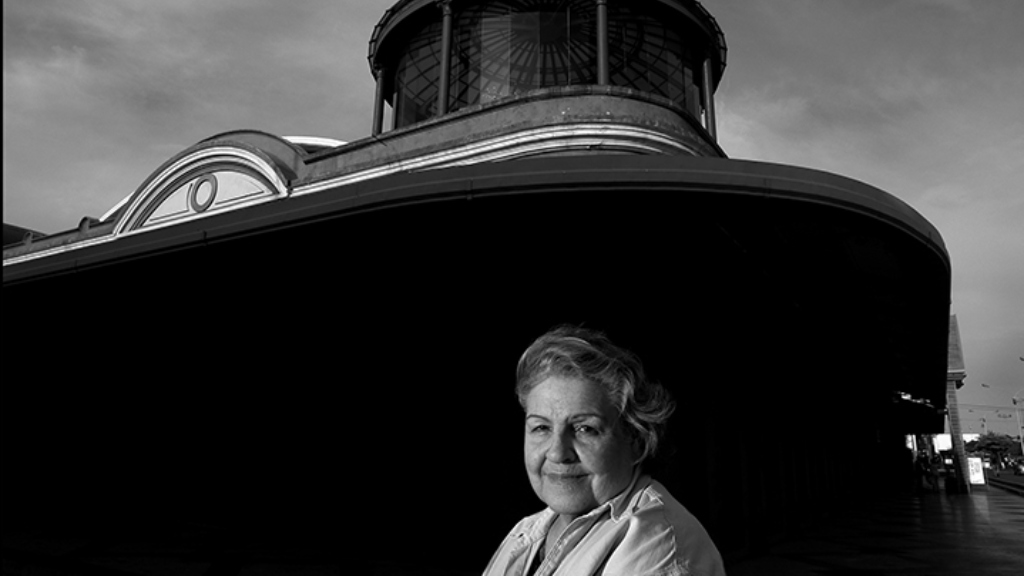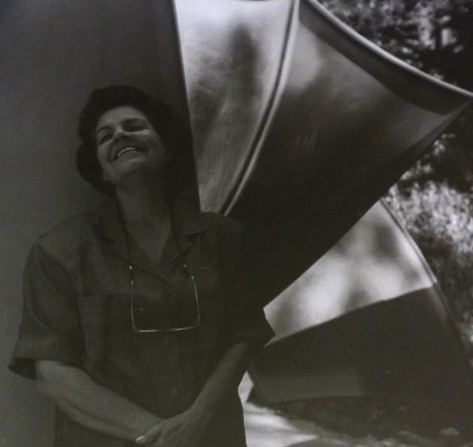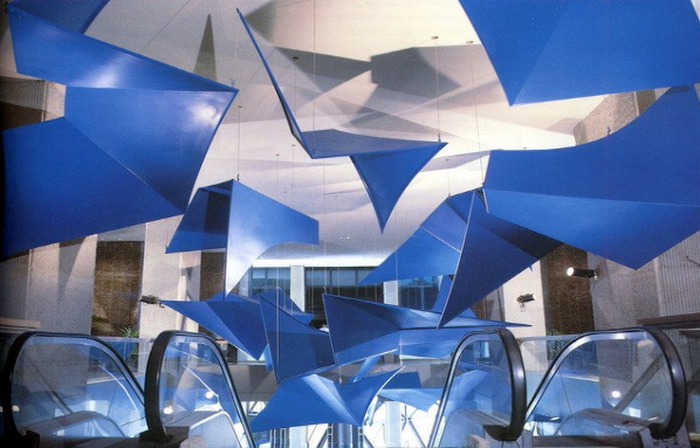Lía Bermúdez, Timeless Sculptress and Champion of the Arts
Venezuela just lost one of its most important artists, who left us both an important body of art and a legacy of management and promotion of culture


Photo: Lía Bermúdez, Colegio de Ingenieros Metro Station, Caracas
Carmen Rosalía González Agreda has passed away. It must sound like the unfamiliar name of an ordinary and unremarkable person but the truth is that she was one of the greatest artists in Venezuelan history. Most of us knew her as Lía Bermúdez, a master sculptress ahead of her time.
She became renowned for her abstract sculptures crafted from metal that transcend mere artistic experimentation or snobbish disdain for figurative art. For her work, Lía was given the National Sculpture Award and the National Fine Arts Award, among other distinctions.
Lía’s sculptures stand out in every space they occupy but despite this, they don’t eclipse other elements present, they’re not blinding. On the contrary and, as peculiar it may sound, they effortlessly blend in with their surroundings.
The smooth, polished surfaces of Lía’s pieces convey a sense of peace and wellness, of order and perfection. In a perfect contrast, the seamless curves combined with sharp angles present in many of her works, and the flow of iron waterfalls that others have, give a sense of spontaneity, adaptability and contained chaos. The vivid but uniform colors she tended to use communicate vitality both to the beholder and the space in which the sculpture lies.
Her sculptures gave part of their essence to the sites in which they were placed in the same way those environments exchanged part of theirs with the sculptures. A perfect symbiosis. They never felt out of place. A lustrous and modern Lía sculpture would fit perfectly next to a 300-year-old historic building as it’s actually the case in Maracaibo’s Baralt Sq., where an elongated, reddish, explosion-like art piece of her authorship stands between two buildings from the late 18th and early 20th centuries.
Lía was born in Caracas, on August, 4th, 1930, and died in the same city on October 22nd. Her work graces many parts of Venezuela’s capital, like the Colegio de Ingenieros subway station, the main building of the Supreme Tribunal of Justice, the Banco Occidental de Descuento’s cultural center and PDVSA’s La Estancia cultural center—a sculpture that had previously been on the Sabana Grande Blvd.
But she was above all a proud citizen of Maracaibo, where she spent most of her career. She filled the city with numerous iconic sculptures like the ones that embellish the Hotel del Lago, the Universidad del Zulia’s School of Architecture, Plaza Baralt and, most prominently, the doors of Maracaibo’s Banco Central de Venezuela’s building, where she turned a functional architectural element into a true masterpiece.
Her love for the culture of Zulia, which she made her home, was reflected in the use of wayuunaiki words (a local indigenous language) and even Zulian geographical locations to name many of her works. She was also a strong promoter of the arts in the region, teaching many generations of artists and, especially, founding in 1993 Maracaibo’s core cultural and artistic institution, the renowned Centro de Arte de Maracaibo Lía Bermúdez (named after her to honor her legacy), which rescued the old and ruinous main market of the city and turned it into a hub for all kinds of art, an essential part of the city’s soul.

Lía at her museum.
Photo: Fundación Lía Bermúdez
I’m no art expert and probably every person can find different interpretations to Lía’s work. Maybe she thought differently about her art. The only thing of which I’m entirely convinced is that we will never see someone of her stature and that she’ll live on in every piece she ever created.
Caracas Chronicles is 100% reader-supported.
We’ve been able to hang on for 22 years in one of the craziest media landscapes in the world. We’ve seen different media outlets in Venezuela (and abroad) closing shop, something we’re looking to avoid at all costs. Your collaboration goes a long way in helping us weather the storm.
Donate






